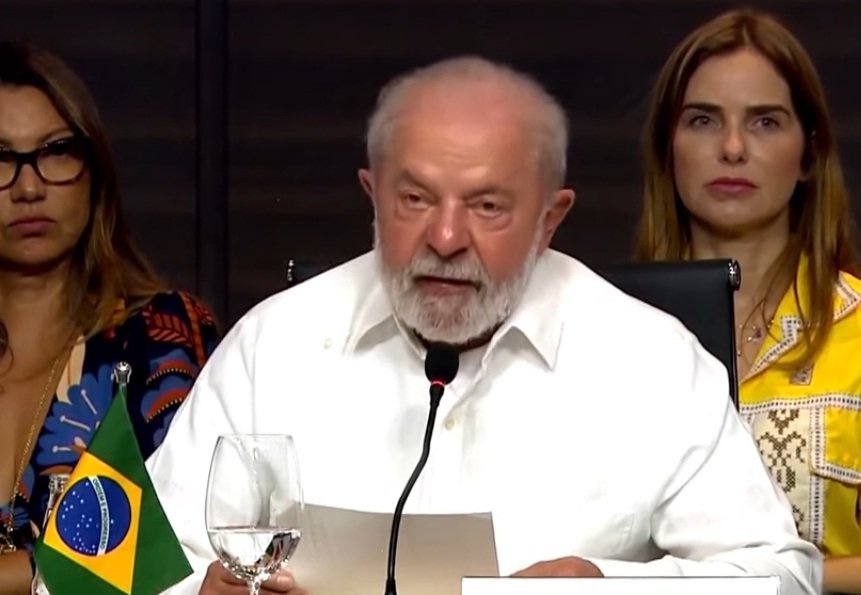Brazilian President Luiz Inácio Lula da Silva took centrestage at the Belem summit on Amazon rainforest deforestation.
Addressing the audience of global leaders and environmental advocates, President Lula described his aspiration for a new Amazon dream, one that harmonises economic development with ecological preservation. Lula’s comprehensive plan for the region’s future encompasses not only environmental protection but also equitable economic growth and social justice for the millions of people who call the Amazon basin their home.
Spanning 6.7 million square kilometres and shared across eight countries and one territory, the Amazon rainforest is home to unparalleled biodiversity of ecological significance. Approximately 50 million people inhabit this diverse region, relying on its resources for their livelihoods.
Despite international agreements to halt deforestation, the eight nations sharing the Amazon basin have not collectively achieved this goal. This issue has spurred representatives from these countries to converge in Belem for the two-day summit. It marks the first such meeting in 14 years.
Upon assuming office, President Lula replaced his predecessor Jair Bolsonaro, who favoured development at the expense of rainforest health. Lula’s administration has curbed deforestation in a significant departure from the previous trend.
However, substantial square kilometres of forest are still lost annually due to deforestation activities.
At the Belem summit, Brazilian President Lula garnered the attention of leaders from neighbouring Amazon nations: Bolivia, Colombia, Peru, Suriname, Guyana, Venezuela, and Ecuador.
Colombian President Gustavo Petro pushed for an end to oil and gas exploration in the Amazon. His vision, however, faces complications from Brazil’s intentions to develop an oilfield near the Amazon River mouth. This conflicting stance highlights the complex geopolitical and economic considerations surrounding the region.
President Petro proposed the creation of an “Amazonian NATO,” a collaborative military effort among regional forces to safeguard the rainforest. This proposal comes as approximately 6% of the Amazon’s expanse falls within Colombia’s borders. President Petro emphasised the need for a two-pronged approach involving strategic planning and military capabilities to effectively defend the environment.
Peru President Dina Boluarte, representing about 11% of the Amazon, echoed President Petro’s concerns. She described the rainforest as not only the “lungs of the world” but also the “heart of the world.” Her urgency stems from the realisation that immediate action is imperative, as evidenced by her decision to prioritise the Amazon rainforest during her first international trip since her inauguration.
The culmination of extensive discussions among leaders resulted in the Belem Declaration.
The joint communique points out the need for improved collaboration among law enforcement agencies to combat illegal activities, environmental crimes, and human rights violations against Indigenous communities, and activists. The declaration proposes the establishment of a law enforcement centre in Manaus, Brazil, to enhance cooperation between regional police forces.
However, the Belem Declaration fell short of one major expectation by not including a collective commitment to achieve zero deforestation by 2030. Environmentalists express mixed feelings about its content.
Marcio Astrini, a representative of the Climate Observatory group, criticised the declaration for lacking concrete actions and instead comprising mainly of general promises. He underscored that more decisive measures are needed to counteract the threats facing the Amazon given the pressing climate crisis and escalating global temperatures.
The Belem summit coincides with the European Union’s revelation that July 2023 was the hottest month ever recorded worldwide.
Amazon plays a crucial role in gathering carbon dioxide, a greenhouse gas responsible for global warming. The leaves of the trees act as a buffer against the escalation of temperature extremes. The rainforest is under constant threat from deforestation and agriculture resulting in climate change.
The urgency of the situation is compounded by the already observed temperature increase of approximately 1.1°C since the industrial revolution began.

